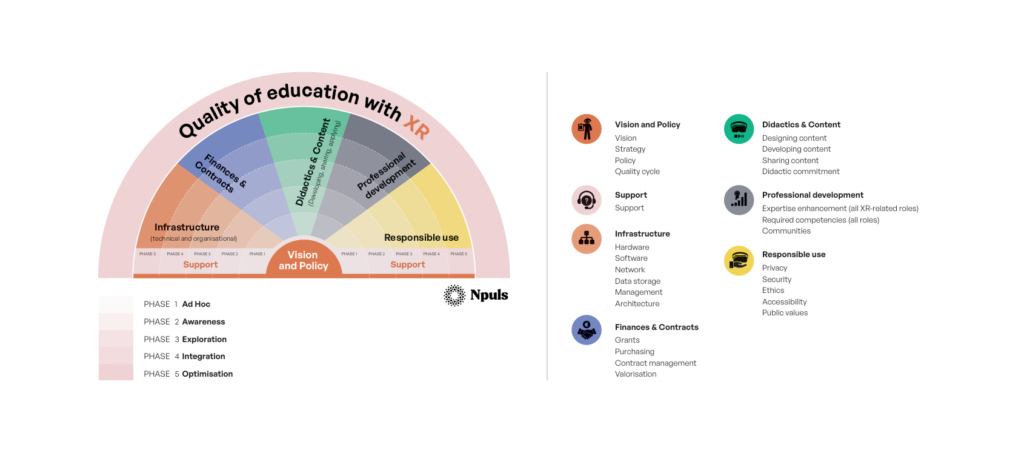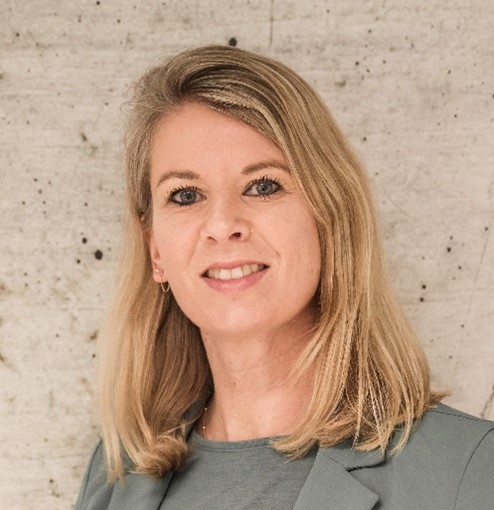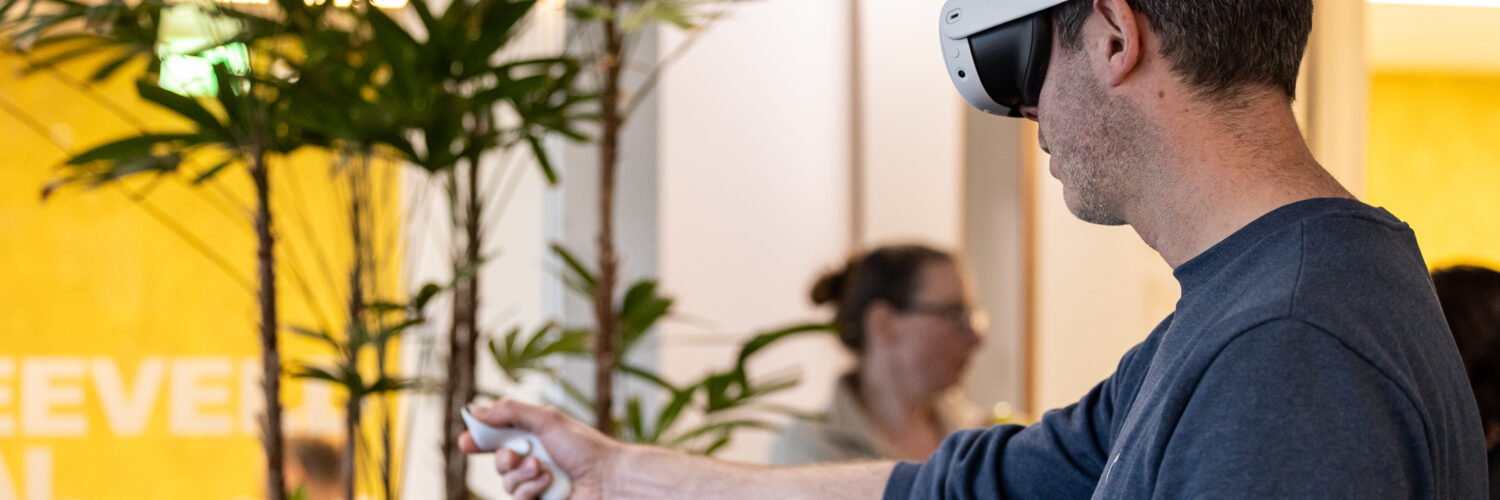by Carolien Kamphuis, Npuls, The Netherlands.
The Pilot hub XR supports Dutch higher education in sustainable and scalable implementation of XR.
XR offers a wealth of possibilities in education and training. How can you, as an educational institution, make the best use of these technologies? What aspects do you have to organise? In the Pilot hub XR, we developed the XR Framework to give educational institutions insight into how to determine which approach is best suited to their needs.
Npuls: moving education forward
Npuls is the National Growth Fund programme, financed and supported by the Dutch government, for all public vocational education training schools, universities of applied sciences, and research universities.
This programme aims to enhance the quality of education, increase its adaptability, and improve the digital skills of both lecturers and learners through collaborative efforts. The Pilot hub XR is one of the programme components through which we share knowledge, experiment, and develop solutions and products at a national level.
Reality is often complex
I’m convinced that XR (eXtended Reality) has great added value in education. In my experience, however, it is harder to implement in practice than you might expect. If you’re considering using VR headsets, for instance, you have to instruct lecturers on how to use the devices, figure out how to properly integrate the headsets into the network, how to securely handle the data you collect and how to get the right applications working. And from a more practical point of view: who will clean the VR headsets? How and when do you recharge them? The scaling up of many projects is hindered by these challenges, which is a great pity.
A practical tool for implementing XR
The educational institutions expressed a need for an overview and structure in this area. This is exactly what the XR Framework provides – a tool to map out the approach and progress of XR implementation. We adopt a holistic approach by considering strategic, technological and operational aspects. This way, as an educational institution, you can quickly determine which aspects you can adjust when implementing XR. You will also know which people to involve at each stage, how to build expertise, and how to align the use of XR with your educational policy.
“The XR Framework is a practical tool for mapping the current situation at our university and for describing our ambitions regarding the use of XR technology. It accurately describes the complexity of institution-wide implementation of XR technology and helps us shape responsible and sustainable implementation of immersive technology in our university.” Jeroen Bottema, InHolland University of Applied Sciences

Seven guiding aspects
The XR Framework uses seven categories to provide greater insight into the different aspects that have to be organised and facilitated for successful implementation. Vision & Policy and Support are the foundation, as they are crucial to all aspects. Infrastructure, Finance & Contracts, Didactics & Content, Professional Development and Responsible Use are the other five aspects. Responsible Use comes into play when navigating challenges in the areas of privacy, security, and alignment with public values, for instance.
Five phases for more clarity in your XR journey
To complement the framework, we developed a maturity model that helps you gauge your institution’s progress across five phases in each category and how to move towards a next phase. In the initial, exploratory phase, XR is used sporadically and experimentally without any formal guidelines or strategies. In the final phase – optimisation – XR is used to its full potential, with feedback mechanisms and continuous improvement cycles having been established. Remember, there’s no ‘right’ phase – it’s about understanding where you are in the process as an institution and the potential for growth. As it’s not a static model, we recommend an annual review to keep pace with evolving technologies and institutional changes.
“We use the maturity model to gain insight into the extent to which XR has been implemented within our university. This allows us to see on which aspects there is still work to be done.” Jan Bouwman & Jeroen Rou, Utrecht University
Crafting an interactive toolbox
Our XR Framework journey began with a literature review. We also gathered input from vocational education training schools, universities of applied sciences, and research universities in the Netherlands. A working group of eight educational institutions was set up to help develop the XR Framework. Now we’re developing an interactive toolbox with practical resources, success stories, and lessons learned. This will include everything from a vision document on how to use XR in education, inspiration sessions for lecturers who want to know more about using XR, a sample contract for purchasing headsets, to an article on the pitfalls of implementation.
Support among all educational institutions
What I would really appreciate is if we could eventually show which maturity phase the tools in this toolbox correspond to. I’m extremely happy we have such broad support among educational institutions in higher education, as this will allow us to collaborate on implementing XR at the national level in the Netherlands and learn from each other’s successes and setbacks. I consider the XR Framework a valuable tool that gives educational institutions the opportunity to experiment and drive innovation with XR. And it’s okay to make mistakes! Our ultimate goal is learning from our experiences, ensuring quality, and moving education forward. Indeed, the XR Framework will evolve with input from the educational community. We’re always eager to hear from institutions willing to contribute their insights and experiences.
“The XR Framework has helped us define the guidelines and processes for implementing XR across our university of applied sciences.” Harald de Vries, HAN University of Applied Sciences
If you have any questions, please feel free to reach out – xr@npuls.nl

Carolien Kamphuis, an independent Educational Consultant and Blended Learning Specialist, supports educational institutions and organizations in improving, changing, and innovating their education. With a solid understanding of both general and blended learning and training, she strives to design interactive education with meaningful use of digital tools to engage learners.














